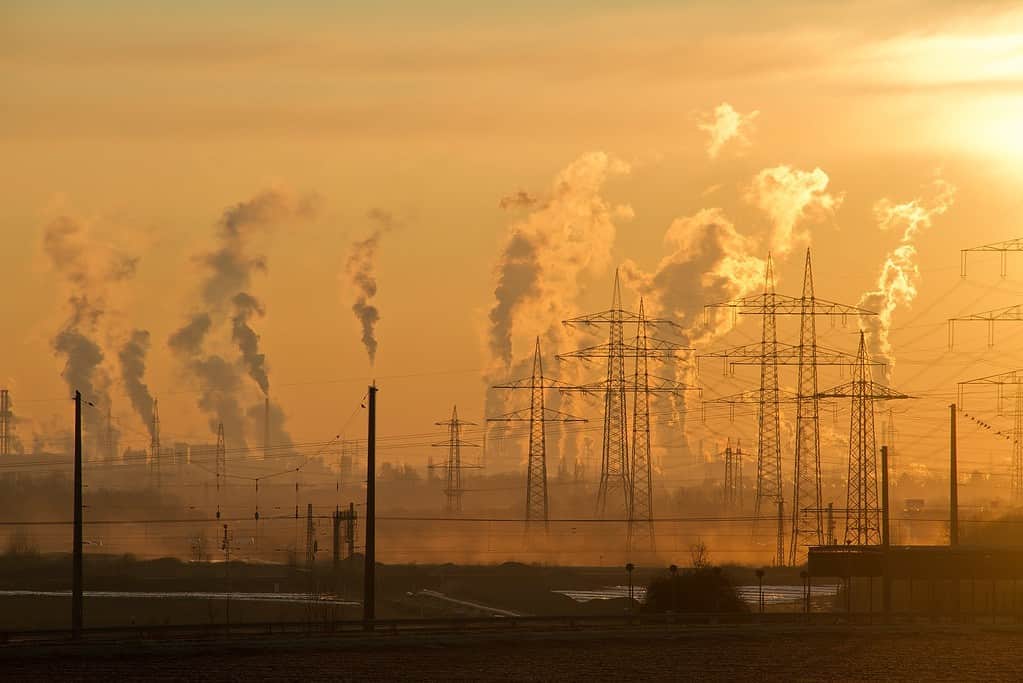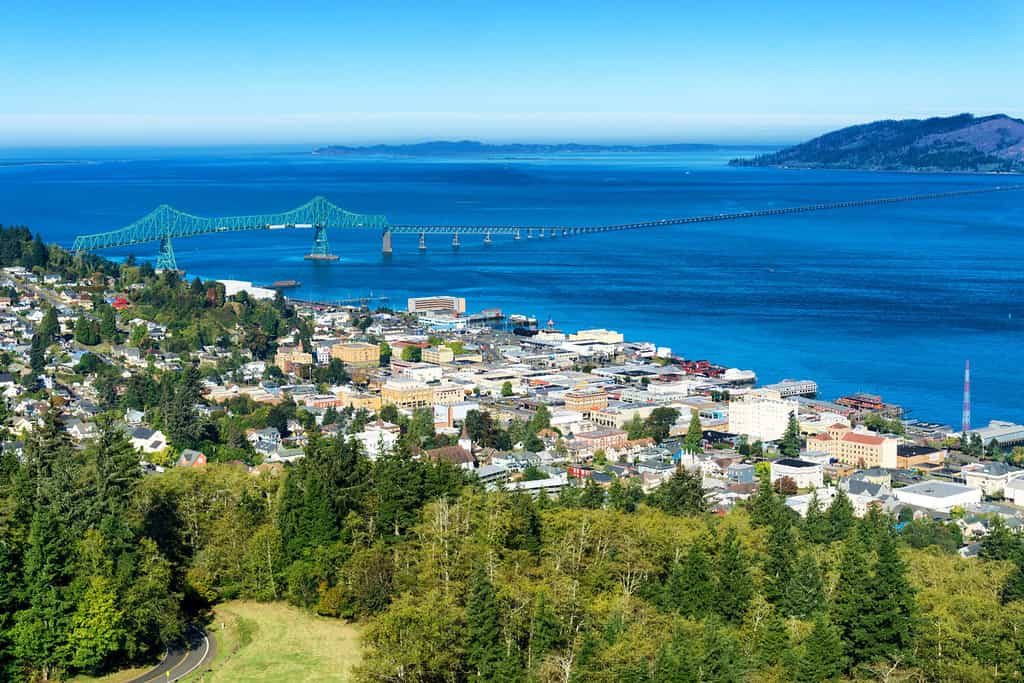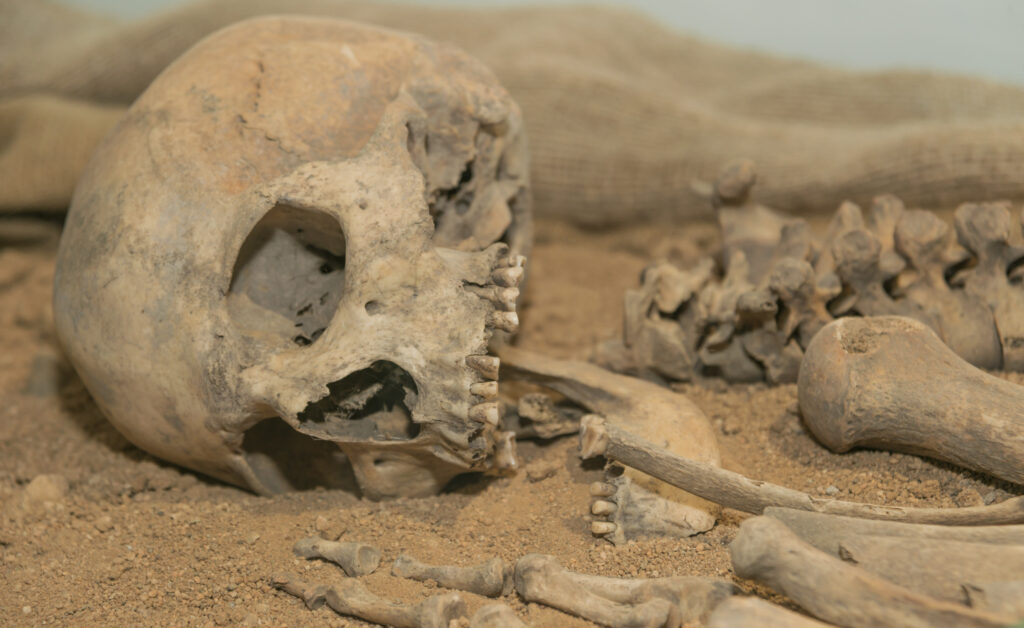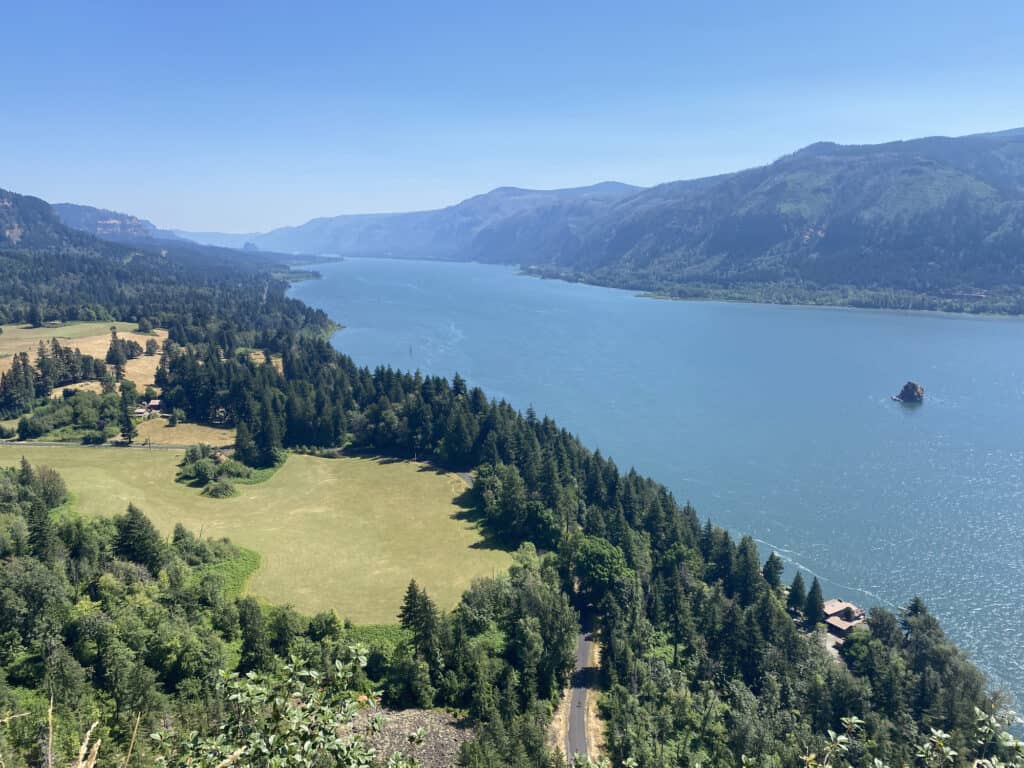The Columbia River is located in the Pacific Northwest. It empties more water into the Pacific coast than every other river in the country. The Columbia River travels 1,200 miles to the Pacific Ocean.
Along the way, it passes through four different mountain ranges. Do you want to know more facts about the Columbia River that will blow your mind? Keep on reading for our top 10 picks!
1. Several Dams Producing Power on the Columbia River

The Dalles Dam is one of the most well-known dams along the river.
©Dee Browning/Shutterstock.com
The Columbia River was a perfect hydroelectric river due to its solid canyons and tremendous volume. Currently, the mainstem Columbia has 14 dams. These stretch from Bonneville at river mile 146 to Mica at river mile 1,018. Within the Columbia River Basin, you will find over 450 dams!
The dams generate the vast majority of the electricity in the Pacific Northwest. They are on the Columbia and its primary tributaries. The Snake River is one of the main sources of hydroelectricity and is the longest feed stream, measuring nearly 1,100 miles.
2. Fishing is Extremely Popular

Chinook salmon can grow up to three feet and weigh about 30 pounds.
©Martin Rudlof Photography/Shutterstock.com
Many people have it on their bucket lists to go fishing for pleasure on the Columbia River. Each year, numerous different runs of Chinook, Coho, and Sockeye Salmon as well as Steelhead leave the mouth of the Columbia River and travel upstream.
Their goal is to ultimately travel to one of its several tributaries in Washington, Oregon, and Idaho in the hope of finishing their voyage to spawn in their home waters. Various other species exist alongside these notable fish.
There are dozens of tributaries flowing into the Columbia River. Separate fisheries normally manage each tributary. The term “mainstem” refers to the fisheries occurring in the Columbia River itself.
3. It Features the Columbia River Gorge

People from all over the world travel to the United States specially to see the Columbia River Gorge.
©evenfh/Shutterstock.com
The Columbia River Gorge, which is only 30 miles east of Portland, provides breathtaking views, hiking and biking paths, and over 90 waterfalls. Before flowing into the Pacific Ocean, the Columbia River makes its way through this breathtaking gorge.
Such a marvel of deserts and woodland, peaks and waterfalls, sunshine and rain, can be found in no other place on earth. It is the only location worldwide where a complete mountain range is carved out by a powerful river.
Even before the Cascades rose, the Gorge was formed over the years, and its violent past of volcanic eruptions, enormous floods, and landslides remains visible today. The Gorge offers distinctive habitats, species, and beauty in addition to being famed for its canyons and glistening river.
Riparian habitats and wetlands change into highland crags and grasslands as the terrain rises from the water’s edge to the summits of mountains. There are over 800 plant species, including 15 types of wildflowers that are unique to this area.
4. It is the Fourth-Largest River in the United States

This river separates Portland from Vancouver.
©Bob Pool/Shutterstock.com
The Columbia River is the continent’s fourth-largest river by volume. At the mouth, it has a standard annual volume of 192 million acre-feet. The river is around 1,243 miles long overall. The drainage basin, which is about the size of France at 259,000 square miles, drains parts of seven states and British Columbia and spans three latitudes and nine longitudes.
The Columbia River is the largest river in the United States that drains into the Pacific Ocean. Across the continent, only the Mississippi, St. Lawrence, and Mackenzie rivers have more water than it.
5. An Abundance of Wildlife

Lamprey look like something you’d see on another planet.
©Gena Melendrez/Shutterstock.com
There are many ecosystems and a wealth of biodiversity in the Columbia River Gorge. Deer, mountain lions, beavers, a plethora of bears, black bears, and scuttling squirrels are among the mammals that live there, in addition to amphibians and reptiles.
If you spend enough time in the woods near the Columbia River, you’ll likely see a garter snake or Pacific tree frog! The Columbia River is home to numerous fish species, including the popular salmon.
For hundreds of years, the Pacific lamprey has served as a significant fish in the Columbia River. They move like snakes while swimming and have unique teeth. You can see these critterslaying on rocks with their suction-cup-shaped jaws still in place.
Lampreys are freshwater creatures that are born, develop to adulthood in the ocean, and then migrate to freshwater to mate.
6. Climate Change Affects the River

Local agencies are working hard to reverse the affects of climate change on the Columbia River.
©SD-Pictures / Pixabay – License
Clean water is in danger from fossil fuels. Consider oil spills, pipelines that harm salmon waterways, river coal dust, and mercury deposits from coal-burning power plants. Salmon and the great Columbia River go hand in hand.
Climate change is affecting the river, making it more difficult for salmon to thrive while we work to restore the Columbia River’s endangered salmon populations. The Pacific Northwest is experiencing an increase in the frequency of warm days and nights.
Extreme heat waves will become more frequent and intense over the summer, and this will have disastrous effects on the Columbia River.
7. Humans Have Called It Home For Thousands of Years

Astoria, OR was the first permanent settlement along the river.
©Jess Kraft/Shutterstock.com
Humans first appeared on the shores of the Columbia River in Oregon. This took place during the Pleistocene, as the ice age glaciers started receding from the interior mountain ranges of the Pacific Northwest.
Humans started to occupy multiple locations in the area throughout the beginning of the Holocene epoch, from roughly 12,000 years ago! Native Americans in Oregon have all developed creation myths that have been passed down from one generation to another.
By the sixteenth century, there were numerous bands of people living in what is now Oregon, with the Columbia River hosting the majority of them.
8. A Skeleton Was Found in the Columbia River

It’s not certain how the Ancient One came to be in the river.
©GAS-photo/Shutterstock.com
Two men found part of a human skull just 10 feet from the shore near Columbia Park. The pair discovered the bones in July of 1996. The area was sectioned off and to everyone’s surprise, an almost complete skeleton was found.
They gave the skeleton two nicknames: The Ancient One and The Kennewick Man. When independent archaeologist Dr. James Chatters, who was employed by the Benton County coroner, believed that the bones might not be Native American.
A piece of bone was sent to a lab to help date the skeleton. The Ancient One is among the oldest and most complete skeletons ever discovered in North America. It is said to be nearly 9,000 years old!
9. It is OLD!

Columbia River has the biggest discharge into the Pacific Ocean of any river.
©iStock.com/JPLDesigns
According to established geologic history, the old Columbia River evolved around 17 million years ago. The geologic record prior to then is ambiguous and challenging to interpret. In any case, the Columbia River in the past was substantially distinct from the river that exists today.
The pressure started to twist the basin into the distinctive east-west folds that constitute the contemporary tributary river basins some 12 million years ago. Ironically, the Columbia Plateau’s fertile agriculture was created as a result of severely dry conditions that existed between the advancing and retreating of glaciers throughout the last Ice Age.
A string of devastating floods, possibly the largest floods ever recorded in world history, ravaged the Columbia River path through what currently constitutes Washington and the Columbia River Gorge between 12,000 and 15,000 years ago, near the conclusion of the last Ice Age.
10. The Columbia River’s Namesake

People will buy vacation homes on the river for millions of dollars!
©iStock.com/Sharla Libera
The simple narrative of how the Columbia River got its current name dates back to May 12, 1792. American captain Robert Gray’s ship reached the perilous bar of the western river. This ship captain was the first known European to travel the river.
Boston businessmen funded his fur-trading voyage and provided him with a private ship called “Columbia Rediviva.” On May 18, he decided to name the vast river after the ship.
The photo featured at the top of this post is ©
Thank you for reading! Have some feedback for us? Contact the AZ Animals editorial team.







